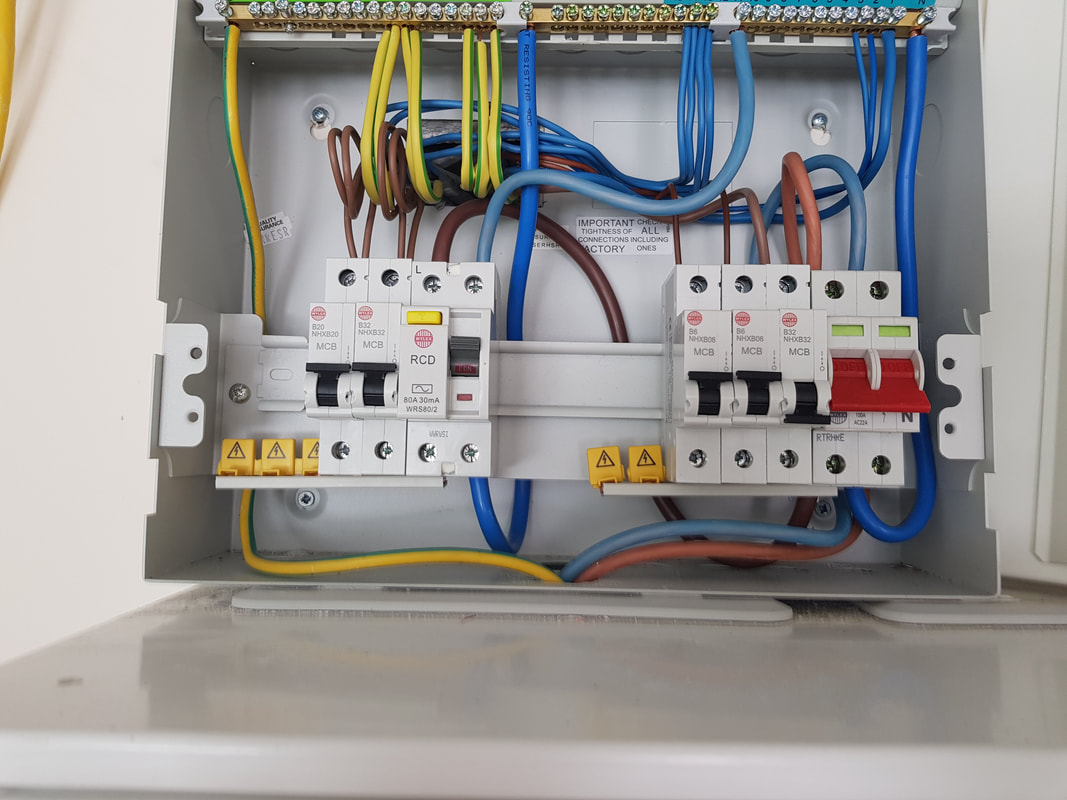Top-Notch BRE Electrical Services for Residential and Commercial Needs
Top-Notch BRE Electrical Services for Residential and Commercial Needs
Blog Article
The Ultimate Guide to Electrical Installation: Tips and Strategies for a Safe and Effective Home Electrical Wiring System
In the realm of home upkeep, few aspects are as vital yet frequently ignored as the electric circuitry system. By checking out the nuances of electrical security measures and energy-saving methods, this thorough overview will certainly shed light on the details of home wiring, equipping individuals to take cost of their house's electrical facilities.
Comprehending Electric Precaution
To make certain the safety of both individuals and building, understanding and applying proper electrical precaution is vital in any kind of home circuitry task. Electricity is a powerful force that can be dangerous if not taken care of with caution. Among the essential safety and security steps is guaranteeing that all electric work is done by certified specialists who follow neighborhood building ordinance and policies. It is essential to perform a thorough assessment of the electrical system before starting any type of electrical wiring project to identify prospective risks or issues that require to be addressed.
In addition, making use of the ideal tools and devices is important for preserving security throughout electrical installments. Protected gloves, voltage testers, and protective eyewear are several of the standard safety and security gear that ought to be used to avoid electrical shocks or accidents. It is also crucial to de-energize circuits before dealing with them and to label all circuits and breakers clearly to avoid complication.

Crucial Devices for Home Circuitry
Making sure the appropriate implementation of electrical security measures in home circuitry projects involves making use of a specific collection of necessary tools made to facilitate the installation procedure efficiently and safely. A few of the key tools needed for home electrical wiring projects include a voltage tester for inspecting online cords, cord pole dancers for getting rid of insulation from wires, a cord cutter for precisely reducing cables to length, a screwdriver set for protecting electrical parts, electrical tape for insulation and securing connections, a wire ripper for removing cable television sheathing, and a multimeter for gauging voltage, existing, and resistance. Additionally, a drill with little bits is essential for creating holes for wiring and installing electrical boxes, while fish tapes or poles help in drawing cables through avenues or wall surfaces. It is important to purchase top quality devices to guarantee precision, effectiveness, and safety and security during home electrical wiring tasks. By having the necessary tools conveniently offered, house owners can efficiently browse the installment process and preserve a safe electrical system within their homes - BRE Services.
Step-by-Step Electrical Installation Overview
Starting an electric setup project calls for thorough preparation and adherence to security guidelines. Prior to beginning any job, guarantee you have an in-depth strategy describing the layout of the electrical system, including the positioning of electrical outlets, switches, and components. Take into account the power needs of each device to identify the appropriate cord scale and circuit breaker dimensions.
The initial step in the installation procedure is to shut down the power supply to the location where you will certainly be functioning. Make use of a voltage tester to verify that the circuits are de-energized before touching any cables. Next, thoroughly eliminate existing components or electrical outlets and separate the wires.
When mounting brand-new circuitry, run BRE Electrical Solutions wires via walls and ceilings, protecting them in position with suitable fittings. Follow regional structure codes and manufacturer guidelines for correct cord installment and links. BRE Services. See to it to classify cables for very easy recognition and future maintenance

Troubleshooting Common Wiring Issues
Having completed the installment procedure as laid out in the previous subtopic, troubleshooting usual electrical wiring concerns is a necessary ability for guaranteeing the safety and security and performance of your electrical system. One common concern is a tripped breaker, usually caused by overloaded circuits or a short circuit. To troubleshoot this, situate the breaker panel, identify the tripped breaker by searching for the one not completely in the "on" placement, and reset it by flipping it totally to "off" and after that back to "on." An additional prevalent issue is a damaged electrical outlet, identified by no power or recurring power supply. Make certain the electrical outlet is not regulated by a switch, after that use a voltage tester to look for power. If there is no power, transform off the circuit, check the electrical wiring connections for any type of loosened or broken cords, and change the outlet if needed. Constantly flickering lights can show loose wiring links or an overloaded circuit. To address this, check and tighten up all cord links in the impacted fixtures and switches and redistribute the lots on the circuit to balance the electrical demand. Regularly evaluating and promptly resolving these common wiring issues will certainly maintain the security and performance of your home electric system.
Tips for Energy-saving Electrical Equipments
For optimum power performance in electric systems, executing wise techniques and making use of energy-saving innovations is extremely important. One essential tip for accomplishing an energy-efficient electrical system is to update to LED lights. Appropriate insulation and securing of home windows, doors, and electrical outlets can likewise protect against energy loss, ultimately reducing the work on electric systems.
Final Thought
In final thought, implementing appropriate precaution, utilizing essential tools, following a detailed setup overview, troubleshooting common issues, and including energy-efficient suggestions are important for a safe and efficient home circuitry system. By sticking to these methods, home owners can guarantee the durability and capability of their electrical installations. It is essential to focus on safety and security and performance when it pertains to electrical work in order to stop potential hazards and to keep a dependable electric system in the home.
Report this page